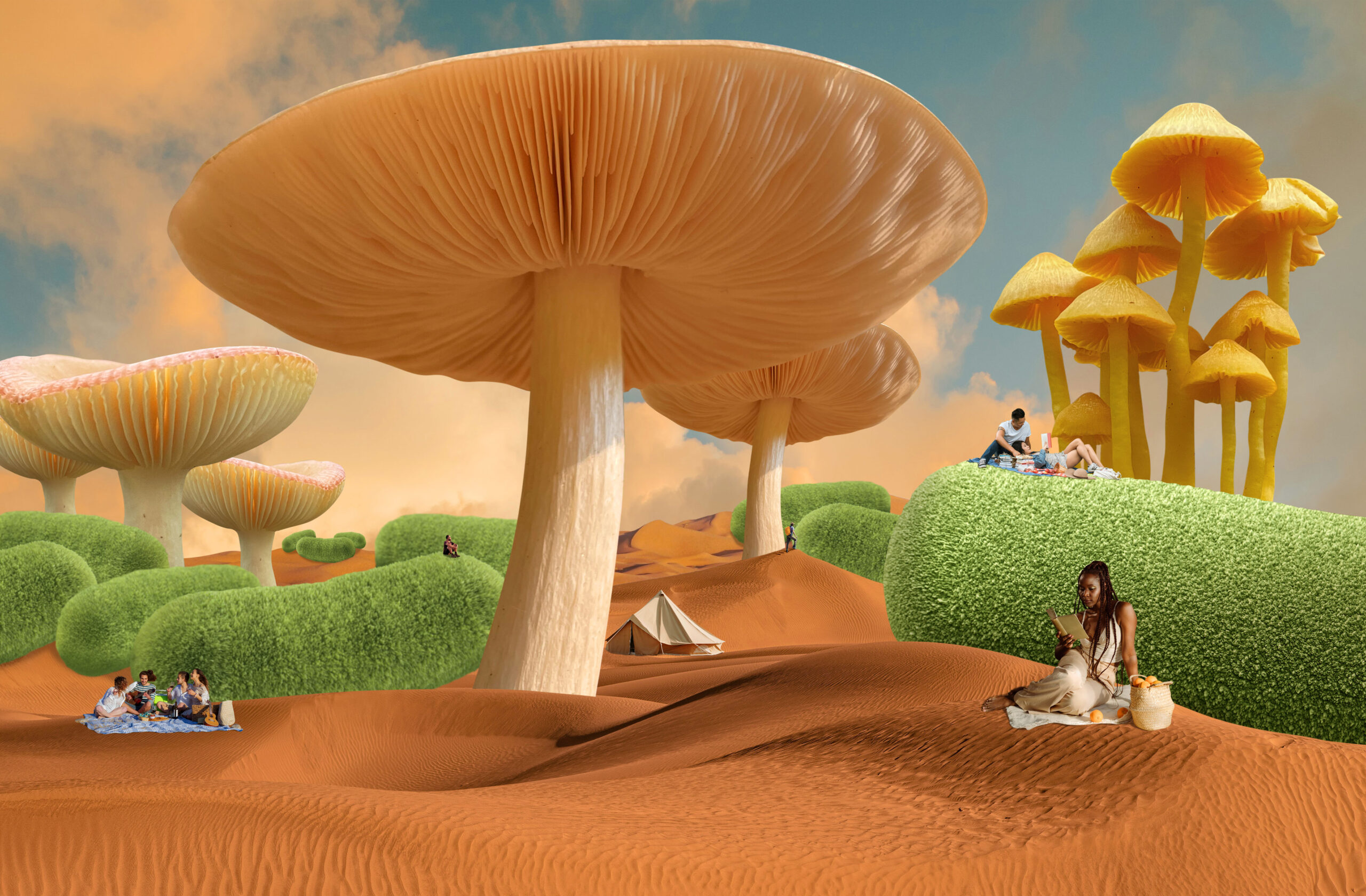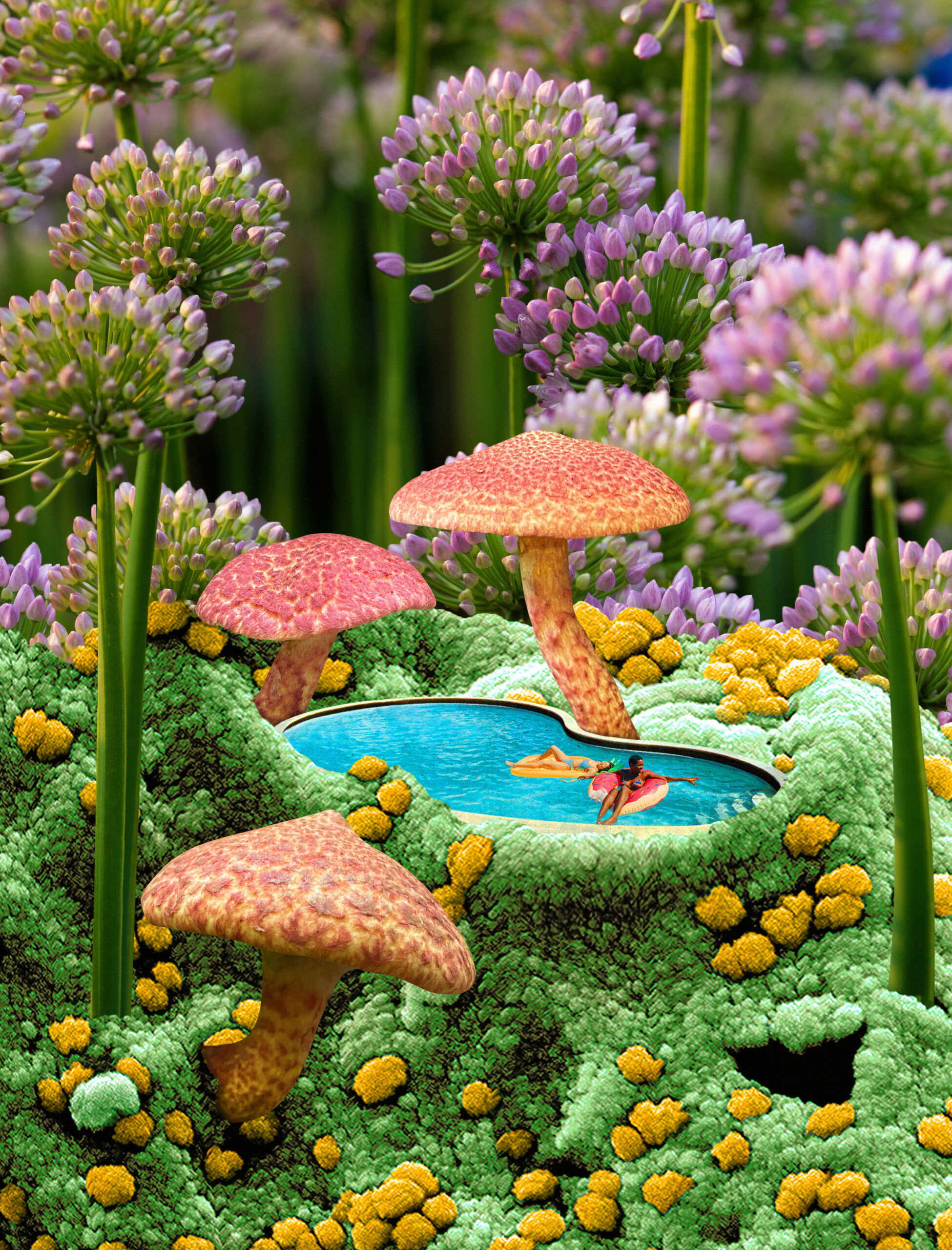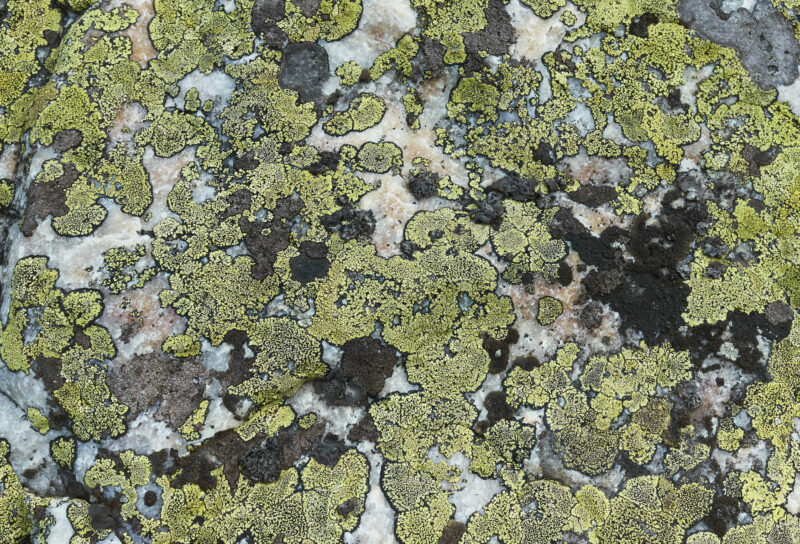In summer 2018, a group of scientists set off on a daring expedition. Their goal: to find life that could survive and thrive in the hottest places on Earth.
This mission took them to Ambrym Island in the Vanuatu archipelago, a series of geologically intriguing keys in the South Pacific Ocean, home to one of the planet’s most dangerous volcanoes. Surrounded by rugged cliffs and sloping plateaus of multi-colored stone, the island’s Marum Crater contains a 7.4-mile wide caldera of boiling lava that spits up more plumes of poisonous gas than any other scissure in the world.
Jeffrey Marlow, an assistant professor of biology at Boston University, and his team delved into this netherworld on the hunt for extremophiles, atypical microorganisms that have evolved to survive the most extreme conditions on Earth. Some of these creatures can withstand near-freezing temperatures and crushing pressures in the deep sea, or the high acidity of sulfuric pools. Deinococcus radiodurans can survive under UV light or in vacuums without oxygen, conditions that typically deter any microbial growth. NASA even dubbed it Conan the Bacterium because of its unusual durability. Astrobiologists suspect it could be extraordinarily useful in outer space, as astronauts work towards setting up long-term, self-sufficient colonies in other worlds.
Marlow’s team spent days trying to secure extremophiles that withstand nearly 2000 degree volcanic heat. They wondered what kinds of internal chemical conditions allow these microbes to inhabit fresh surfaces on Earth—a question that challenges our current notions of habitability.
“Environmentally, it’s just the craziest place I’ve ever seen,” he says. “[The lake] was just always kind of humming away at this background level.” Though the Marum Crater lava lake has since disappeared, the insights the team gleaned have vital implications for modeling microbial populations’ survival in other kinds of perilous locations. The deeper they dug into the volcanic sediment, the more they found evidence that some hidden subsets of microbes can survive side-by-side in both protected niches and in specific kinds of chaos.
This suggests that the volcanic environment likely provides a valuable space for microbes to grow sustainably. It’s further proof that life finds many ways to adapt to the galaxy’s harshest circumstances.
Marlow’s work contributes vastly to what we know about the inner processes of these mysterious organisms. Scaled up, microbes like this could one day make an appealing tool to help terraform other planets, transforming them from barren wastelands to environments that complex organisms, like humans, could prosper in. “Evolution has been equal to the task of dealing with the environmental diversity we have on Earth,” Marlow says. “The question is, as those environments get even more diverse as we look beyond Earth—can life handle that diversity as well?”
A Complex Existence
Fungi—both the garden variety or the kitchen variety that creeps up on stale bread—are a key reason why Earth is so rife with organic activity. First discovered in the late 19th century, these microbes were once viewed as mere propagators of infectious disease. Since then, modern research tools have revealed that these incredibly useful and at times, lethal, microorganisms exist everywhere around us and fulfill a multitude of crucial functions for the good of the environment. But could their power potentially be harnessed to transform even the most inhospitable of worlds into an agricultural idyll?
This idea isn’t so far-fetched, Marlow says. Microbes already have a history of terraforming Earth. “The idea that now our entire atmosphere is oxygenated and all animals depend on oxygen,” he says. “In the early phases of life on Earth, that would have been impossible to consider.”
Billions of years ago, when oxygen was still considered a toxic molecule, microbes called cyanobacteria began using photosynthesis to gain energy from sunlight then, as a consequence, releasing large quantities of O2 into the atmosphere. This changed Earth’s biosphere into one that was suitable for other kinds of life. And multicellular organisms quickly rolled onto the scene. Today, trillions of microbes regulate chemicals in our soil, food, and bodies. When microbes devour dead matter, they release and recycle essential chemicals such as oxygen and nitrogen back into the atmosphere. These chemical nutrients are then later used to spur new life—rejuvenating plants and animals alike in an ever-evolving cycle. To the untrained eye, this process is just about indistinguishable from magic.
As space agencies prepare to send humans hundreds of millions of miles away from home, scientists are now more than ever looking to find solutions for turning strange worlds, like Mars, into places where future explorers could confidently settle. Could the solution lie with microbes sent to distant destinations in preparation for our arrival?

Microbial Pilgrimage
The moment an astronaut steps foot on Mars for a terraforming mission, they are up against great odds, as they deal with an extreme lack of, well—everything.
Roughly half the size of Earth, the Martian atmosphere is about 100 times thinner and lacks much of the chemical nutrients life has come to depend on. It’d be impractical to stock a spaceship with all of the supplies needed for an interplanetary move. With no way to receive care packages or technological aid from Earth, astronauts would need to pack enough nutrients to last the duration of the journey and jumpstart the process of terraforming an alien world.
And while the two planets have similar terrains, our cosmic neighbor has an inhospitable deficit of liquid water. To create a successful off-world utopia, the first thing human settlers will have to do is cultivate a continuous supply of food, water, and oxygen. Josh Silverman, CEO of Windfall Bio, an agricultural technology company that uses methanotrophs (methane-eating microbes) to aid farmers in sustainable farming, says explorers will need to create food chains with some custom tinbox, that rely on small, self-sustaining, self-replicating platforms.
On Earth, we take for granted the role microbes play in keeping the landscape lush and ecosystems well-fed. On another planet, our ability to create advanced ecosystems from scratch depends on our ability to close the loop. In this case, that means ensuring that necessary chemical and nutrient resources aren’t lost in the transition between one state of matter and the next.
“If you’re going to be on Mars, one of the most important things is making sure you’re not wasting any resources,” Silverman says. “On Mars, every molecule is valuable.” Several machines on the International Space Station rely on this same closed loop concept. They recycle the carbon dioxide astronauts exhale back into clean air and distill liquids like urine and sweat into drinking water. Additionally, because it’s more stable than liquid fuel, methane has also become a promising fuel for future spacecraft, particularly for long, arduous journeys to Mars.
On Earth, we take for granted the role microbes play in keeping the landscape lush and ecosystems well-fed.
Space agencies like NASA have long declared that technologies far beyond our current capabilities are needed before humans can come anywhere close to successfully settling down on another world. Modern shortcomings aside, some popular Martian terraforming concepts are wacky: one proposes redirecting an icy asteroid’s orbit so it crashes and produces liquid water on the planet’s surface; retired NASA scientist Jim Green has suggested building a large magnetic shield to block the sun’s rays from stripping away Mars’s atmosphere. Though we’re still in the early days of the 21st century,humanity has successfully altered the course of a faraway asteroid and we may be one step closer to deploying the perfect solution.
One of the most well-agreed on priorities in a brand new world would be seeding microbes or genetically engineered plants on the surface to help create a stable, habitable atmosphere. Another idea would be to use them to cultivate the soil. It sounds like a relatively easy way to conquer a planet: grow some microbes and just let them loose. But even as advances in synthetic biology may accelerate this terraforming process, we most likely wouldn’t see results within our lifetimes.
“It’s appealing and tempting to draw out molecular pathways and say, we can just re-engineer this microbe to do new functions we want [it to] do,” says Marlow. “But it’s really hard to move from a theory and a proof of principle into something that is that scale and can survive in a natural environment.”
Moreover, not every planet will have as friendly a constitution as Earth’s. In 2022, scientists demonstrated that with cyanobacteria’s help, the plant alfalfa could grow in soil that mimicked Martian regolith. By finding a way for the plant to flourish, they essentially created a “circular farming process,” with minimal need for external inputs, closed nutrient loops, and regenerative soils. Experts believe we’ll need such circular processes if we hope to grow on another planet.
Faced with the prospect of vibrant or even dead alien ecosystems, we’d also have to figure out how seeded microbes might propagate if left in places with no discernable self-sustaining energy source. Who knows how these complex “little creatures” might evolve once inextricably mired in otherworldly ecosystems?
Closing The Loop
Marlow’s team left Marum Crater with more questions than answers. However, by studying the microbial populations protected beneath the volcanic sediment that dots the perimeter of the lava lake, they got an up-close and personal glimpse into what the first ecosystems on Earth may have looked like, at least from a microbial perspective.
The benefits of this research won’t necessarily only apply in space, where future astronauts await natural water sources, and food stores. The power of microbes could just as easily be used to address agricultural issues here on Earth.
According to the United Nations, the world’s population will be on the cusp of 10 billion by 2050, and the agricultural sector will need to increase food production almost by 70% to account for our growing needs. Lisa Dyson, a scientist and CEO of Kiverdi, a technology company committed to using microbes to manufacture sustainable commercial products, noted during a 2016 Ted Talk presentation in Paris that microbes, whose value is often largely overlooked and understudied, could help with such a task.
“This type of technology can actually help us address an issue with agriculture and allow us to create a kind of agriculture that’s sustainable, that will allow us to scale to meet the demands of tomorrow,“ Dyson said.
The power of microbes could just as easily be used to address agricultural issues here on Earth.
With the aid of supercharged microbes that recycle carbon, called hydrogenotrophs, it could even be possible to revive ecologically sparse or difficult to-access areas into viable farmland. Pouring all of our resources into turning nature’s smallest organisms into miracle workers could be a hopeful turn for both Earth’s climate troubles as well as the global hunger crisis. It’s a goal Silverman envisions his company might help us reach, especially if more people begin to recognize microbes’ potential to change the world as we know it. “Biology is a great platform for making really interesting things,” Silverman says. “It’s slower, but it actually can work if you give it long enough. It builds itself.”



